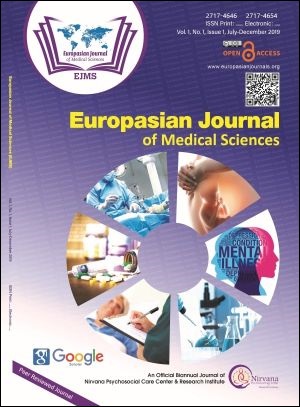Post Exercise Change in Peak Expiratory Flow Rate and its Relation with Body Adiposity in Nepalese settings
Keywords:
Body fat percentage, Peak expiratory flow rate, Queen's College step testAbstract
Background: The Queens College Step Test is used to determine aerobic fitness. Peak Expiratory Flow Rate (PEFR) is the maximum rate of forceful exhalation following full inspiration. PEFR primarily reflects bronchial airflow and depends on the voluntary effort and muscular strength of the individual. Studies that correlate ventilatory capacity with body fat percentage are rare in published literature in Nepalese settings. Body fat percentage is regarded as a better indicator of obesity recently. Hence, this study aims to find an association between post exercise change in PEFR and body adiposity in the context of Nepal.
Methods: A cross-sectional study was carried out from 20th July 2019 to 15th November in the laboratory of Clinical Physiology of Maharajgunj Medical Campus. Body fat percentage was measured by using OMRON BF 214. Pre-exercise PEFR of each subject was recorded by using Wright’s peak flow meter. Post-exercise PEFR was also recorded after three minutes of Queen’s college step test, which is the submaximal exercise test and change in PEFR was calculated and correlated with body fat percentage.
Result: The study showed negative correlation of change in PEFR with body fat percentage (r=-0.324; P<0.001). Significant difference (P = 0.002) was observed between different quartiles of body fat percentage. Highly significant difference (P = 0.003) was noted with first and fourth quartiles.
Conclusion: Less ventilatory adjustment in response to exercise was noted in subjects with more body fat percentage compared to those with less body fat percentage.
Downloads
Downloads
Published
How to Cite
Issue
Section
License
The author(s) retain the ownership of the copyrights for their work published in EJMS without any restrictions. Upon submission, the author(s) grants EJMS a license to publish, including to display, store, copy, and reuse the published content.
License to Publish
By submitting a manuscript to EJMS, the author(s) grant the journal a non-exclusive license to:
- Publish and distribute the content in all formats, media, and platforms (both existing and future), while identifying EJMS as the original publisher.
- Reproduce, display, and store the content in both print and online formats, including institutional and digital repositories.
- Translate, adapt, and summarize the work, including reprints, extracts, and abstracts.
- Develop derivative works based on the original content.
- Include the work in electronic databases and provide links to third-party materials.
Creative Commons Licensing
In addition to EJMS’s publishing rights, authors grant third parties the right to use, share, and distribute their work under the Creative Commons Attribution 4.0 (CC BY 4.0) International License. This allows unrestricted use of the content, provided proper attribution is given to the original author(s) and the journal.

